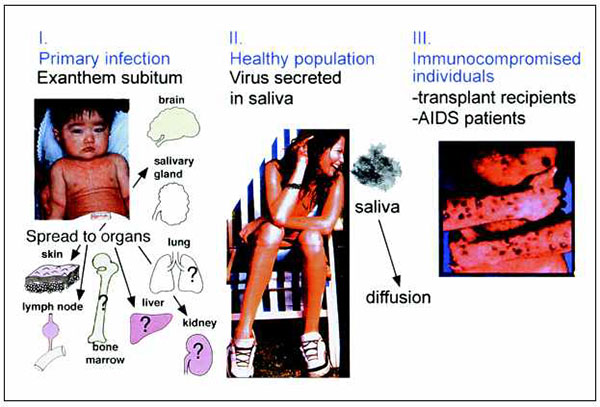Volume 5, Number 3—June 1999
Synopsis
Human Herpesvirus 6: An Emerging Pathogen
Figure 2

Figure 2. Stages of the natural history of HHV-6 infection: I. Primary infection occurs in infants, may result in exanthem subitum (rash on the child's chest), and spreads to organs. Question marks denote sites where HHV-6 spread is likely but not proven. II. In healthy infants and adults, HHV-6 is present in a latent or persistent form in lymph nodes and is produced asymptomatically in salivary glands and shed in saliva, the most probable route of transmission. III. HHV-6 infection/reactivation occurs in persons undergoing therapeutic immunosuppression after organ transplant or in AIDS patients.
Page created: December 10, 2010
Page updated: December 10, 2010
Page reviewed: December 10, 2010
The conclusions, findings, and opinions expressed by authors contributing to this journal do not necessarily reflect the official position of the U.S. Department of Health and Human Services, the Public Health Service, the Centers for Disease Control and Prevention, or the authors' affiliated institutions. Use of trade names is for identification only and does not imply endorsement by any of the groups named above.